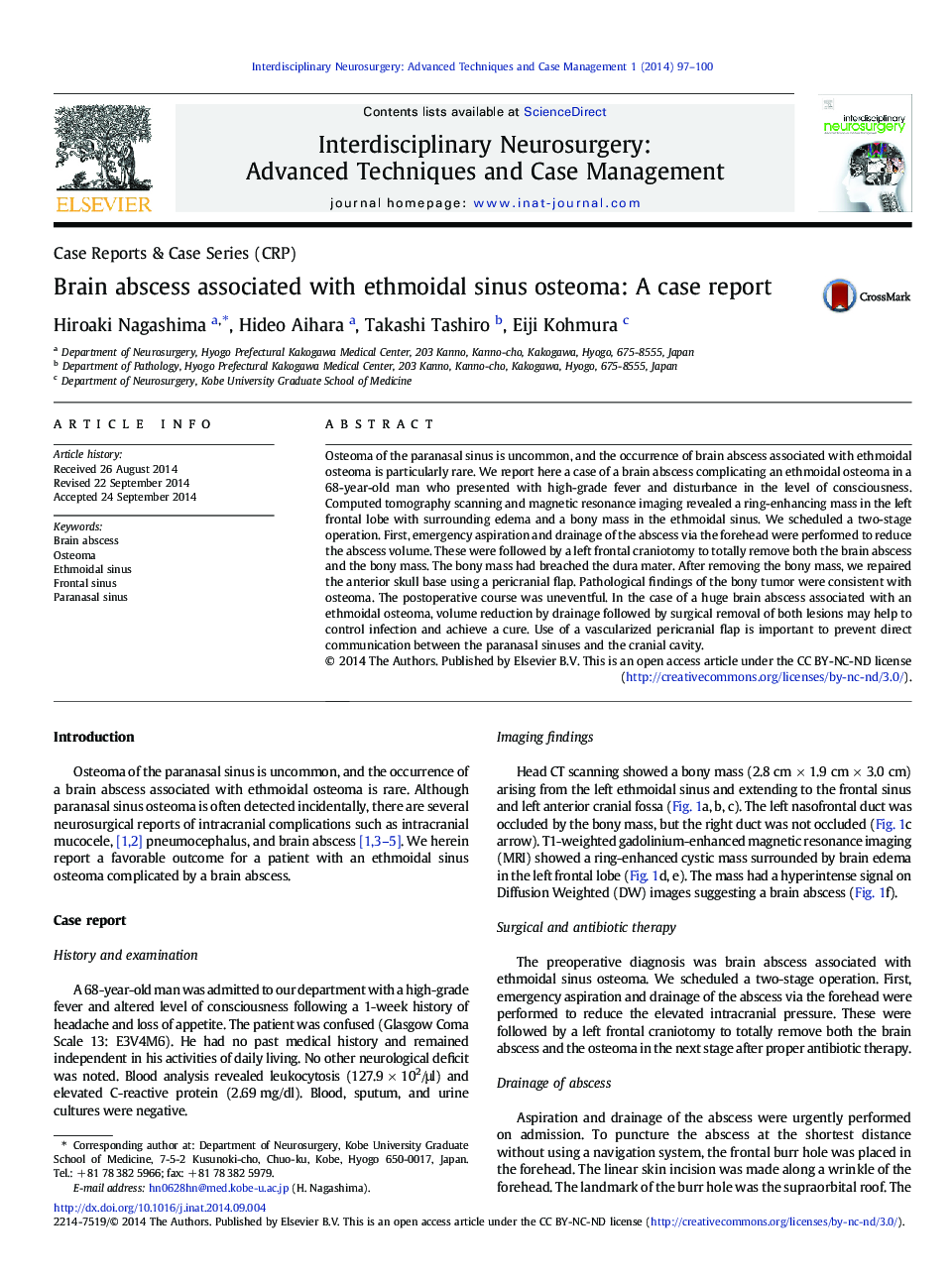| Article ID | Journal | Published Year | Pages | File Type |
|---|---|---|---|---|
| 3057863 | Interdisciplinary Neurosurgery | 2014 | 4 Pages |
•We report a case with brain abscess associated with ethmoidal sinus osteoma.•Approximately 1% of paranasal osteomas present with a brain abscess.•The treatment may require emergency drainage, followed by total removal.•Closure of the communication between the sinuses and the cranial cavity is important.•Using vascularized pericranium is useful to prevent complications and recurrence.
Osteoma of the paranasal sinus is uncommon, and the occurrence of brain abscess associated with ethmoidal osteoma is particularly rare. We report here a case of a brain abscess complicating an ethmoidal osteoma in a 68-year-old man who presented with high-grade fever and disturbance in the level of consciousness. Computed tomography scanning and magnetic resonance imaging revealed a ring-enhancing mass in the left frontal lobe with surrounding edema and a bony mass in the ethmoidal sinus. We scheduled a two-stage operation. First, emergency aspiration and drainage of the abscess via the forehead were performed to reduce the abscess volume. These were followed by a left frontal craniotomy to totally remove both the brain abscess and the bony mass. The bony mass had breached the dura mater. After removing the bony mass, we repaired the anterior skull base using a pericranial flap. Pathological findings of the bony tumor were consistent with osteoma. The postoperative course was uneventful. In the case of a huge brain abscess associated with an ethmoidal osteoma, volume reduction by drainage followed by surgical removal of both lesions may help to control infection and achieve a cure. Use of a vascularized pericranial flap is important to prevent direct communication between the paranasal sinuses and the cranial cavity.
